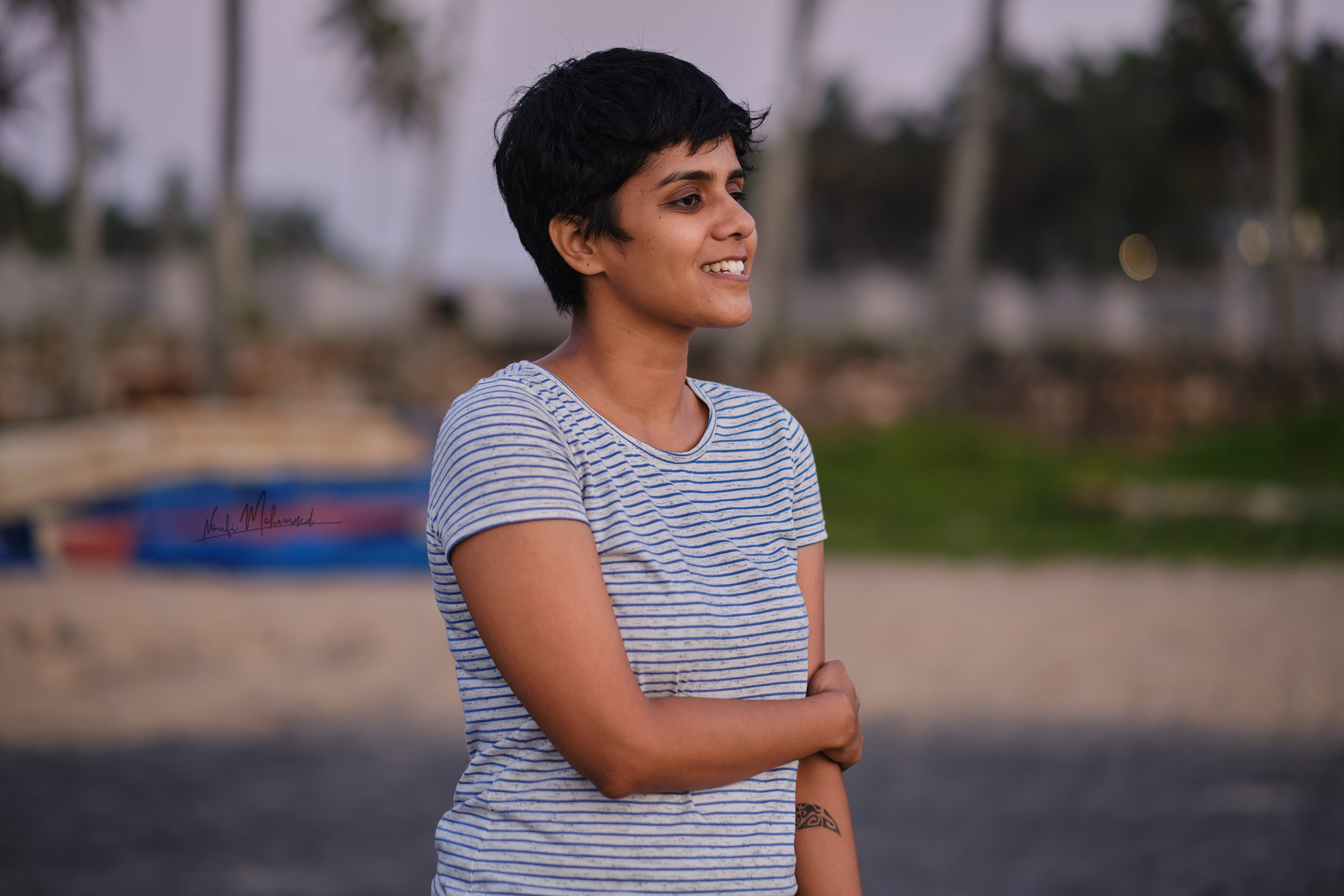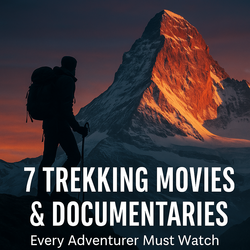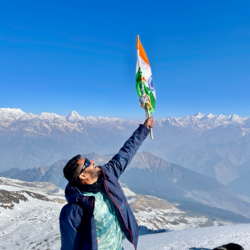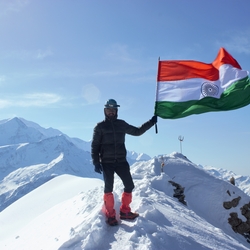Offering access to the vast snowy meadows in Uttarakhand, Dayara Bugyal at an altitude of 3,750M is full of adventure for mountain and trekking enthusiasts.
Sprawling meadows with unobstructed views of the mighty Garhwal Ranges and a thick vegetation cover make Dayara Bugyal a diverse high altitude trek package.
Traversing through woods and clearings, the trail leads to the 'Bugyal' or high altitude alpine meadows of Uttarkashi which are bound to leave you mesmerised with the beauty that they hold.
Here we will discuss the difficulty level of Dayara Bugyal Trek along with the skills and gears required to complete this exciting adventure in an effortless manner.
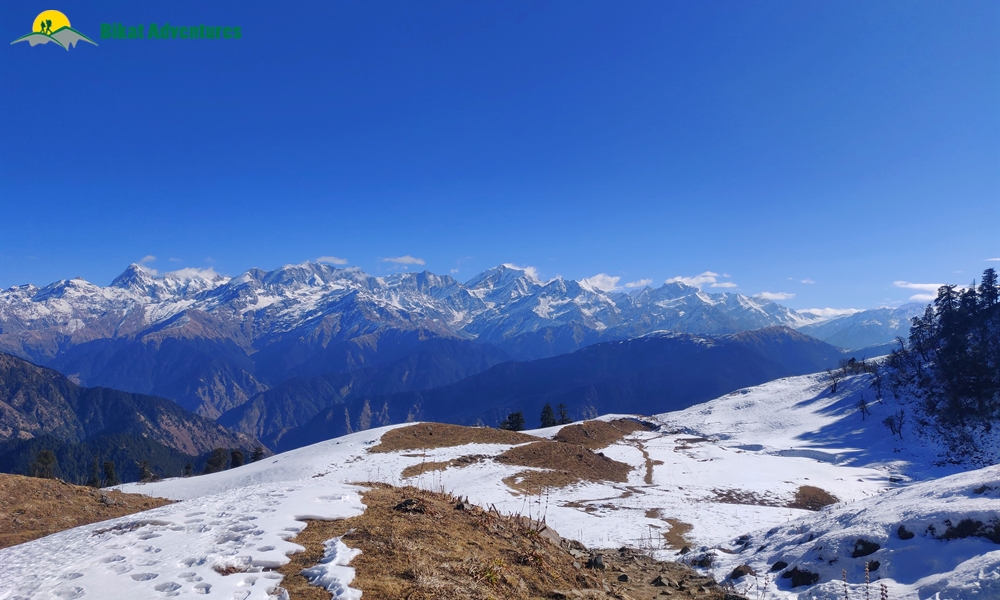
Difficulty level of Dayara Bugyal Trek:
Dayara Bugyal is a level 2 trek on the Bikat Rating Scale (BRS).
About BRS:
The Bikat Rating Scale rates the difficulty level of all treks and expeditions in our portfolio after taking into account their geographical and climatic conditions.
According to this scale, if you are a beginner who is unsure of your fitness level and don’t know what to expect on a trek, a trek rated one will be a good place to start.
If you liked your very first trekking experience and are looking to test your limits next, the treks rated 2 or 3 will do the job for you.
A beginner who is sure of their fitness level on the other hand is welcome to skip the first two levels and directly start with one of the treks rated 3.
From 4 onwards, the rules change a little. It is mandatory to have trekking experience of the previous level to participate in the next level.
Trail of Dayara Bugyal:
An astoundingly beautiful 21 km trail, divided into approximately 5-6 km trekking distance per day, makes Dayara Bugyal a perfect trek for beginners. The trek offers panoramic views of the Garhwal Himalayas as you trek through the smooth snow meadows of Uttarkashi all the way to Dayara Top.

Challenge 1: Chilapada Ascent
The steep half hour ascent from the Gui Campsite to Chilapada on Day 3 can be a challenge for a beginner who has just started exploring the world of trekking. While the altitude gain is not much on this day, the steep trail in Dayara’s forestscapes tests one's physical ability to endure harsh conditions. Although challenging, the ascent is not impossible and can be completed with rest stops. It is however recommended that you take this into consideration while preparing for the trek. Our trek leaders and guides are always there to help out in case of any difficulty!
Challenge 2: High Altitude and Acclimatization
If you are considering opting for a snow trek for the first time, Dayara Bugyal is a great option. Other than its less crowded trails, the meadows offer panoramic views with the snow-covered peaks shining under the afternoon sun of Garhwal Himalayas. The challenge lies in acclimatizing to the altitude here. Summers are soft and colourful at these meadows but in winters, temperatures drop as low as -10°C at night. Dayara Top is at an altitude of 3,750M. Harsh freezing winds in snowy, open meadows along with the scorching sun are common here. Therefore, it is important that you are adequately equipped with layers, sunscreen and UV glasses. .
Gears required for Dayara Bugyal Trek:
While we will be providing most of the technical equipment needed for the trek (tents, sleeping bags, crampons, snow boots, ice axe), there is some basic gear you will need from your end to get through your hike comfortably.
Some of the things you will need are:
1) A sturdy, lightweight backpack: A good backpack which sits comfortably on your back without putting too much pressure on it can be the deciding factor between making it to the summit or not. Good, however, is not a synonym for expensive.
One of our founders, Pankaj, purchased a non-branded pack for INR 1100 in 2010 and the pack continues to work just fine for him even today. In the article linked below, he shares some helpful tips on what to look for when choosing a trekking backpack.
2) Comfortable trekking shoes: Happy feet equal a happy trek. Conventional sports shoes don’t suit trekking trails. We recommend wearing high ankle shoes with sturdy soles. These not only provide better support but also reduce the possibility of injuries while hiking. In case, you need help with a list of deciding factors that make for good trekking shoes, please refer to the article below.
How to choose a good pair of hiking shoes
3) Right Clothing: Any high-altitude trek requires specific kinds of clothing. It should be warm but lightweight. It should also be such that it is easily packaged. We usually employ the layering method where you put on multiple layers of clothing instead of one very heavy, thick jacket. This is for two reasons:
• The weather in Himalayan regions is unpredictable and changes very quickly. Layering gives you the freedom to adapt to that accordingly where you are not left feeling too hot or too cold.
• These are easy to carry and are packing-friendly.
Skills required for Dayara Bugyal Trek:
Bikat Adventures is primarily an adventure learning organization. This means our key objective is not just to help trekkers complete their treks but also to ensure they pick up some valuable lessons and skills in trekking along the way.
To achieve this, we have created learning modules and paired them to different levels on the Bikat Rating Scale.
These modules are taught real-time on the trails by our trek leaders.
The following are some skills that are likely to come in handy on a trek like Dayara Bugyal.
While you will have all the assistance you need on the trek from our capable trek leaders and guides, we suggest browsing through the articles below to get an idea of what is involved.
An easy trail with a not-so-technical terrain makes Dayara Bugyal a smooth trekking experience. However, being a snow trek, basic knowledge of trekking through snow would be helpful to embark upon the journey to Dayara top. A trekking pole could be of great use on this trek. Refer to the articles below to know how to use a trekking pole along with tips and tricks on ascending and descending trails.
Ascending and Descending on Trails
Given how unpredictable the weather gets in the mountains, you are likely to keep changing your layering frequently along the way. Also, due to the vast difference in day temperature and that at night, you most probably will spend a lot of time packing and re-packing your sack depending on whether you are on-trail or at the campsite, have chanced upon sudden rains or are stuck in a suddenly arrived cold hour. Under such changeable circumstances, accessing your stuff can get a bit messy and confusing.
Also, a sack packed right can facilitate your trekking while incorrect packing can even make an easy trail seem difficult. Worry not, we are here to help. The article linked below shares some useful guidelines you can follow to pack efficiently.
Our trek leaders will be guiding you on how to pitch a tent during the trek. Nevertheless, we are linking the article below for anyone who might be interested in reading about it.
Layering appropriately to protect yourself from the cold is essential. The article linked below will give you a fair idea of the winter layers you will need and guide you on how to layer up at campsites and while hiking.
When you know you are going to be in and around snow or in any high-altitude location where the sun is harsh, you might want to carry a good pair of sunglasses. A lack of these could prove to be fatal. The article below can help you pick out just the right pair.
How to pick high-altitude UV protection glasses?
When on any trek, it is each person’s responsibility to know the requirements of the area, some campsite basics and how to manage our own selves as well as the environment around us. While our trek leaders will keep you abreast about the basic dos and don’ts, do read the article below to brush up on some basic principles before the trek.
Waste Management and Leave No Trace Principles
We hope this article answers all the questions you may have about Dayara Bugyal. In case you need further assistance/information with something, please feel free to reach out to us. We are only a phone call away.

We hope this article answers all the questions you may have about Dayara Bugyal Trek. In case you need further assistance/information with something, please feel free to reach out to us. We are only a phone call away.


